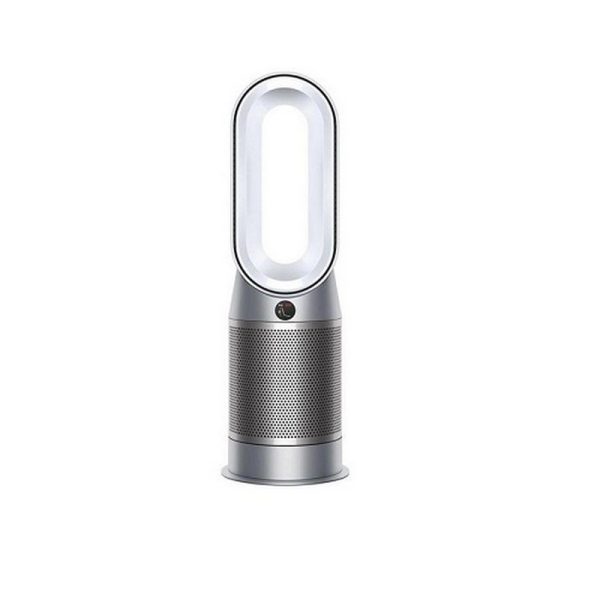Dyson HP7A Hot & Cool Purifier
- BrandDyson
Our price incl. vat
Original price was: €649.99.€549.00Current price is: €549.00.
Out of stock
Product Specifications MPN
- Purifies
- Cools you
- Heats you
Captures Dust, Allergens, and Bacteria
Dyson purifiers have intelligent sensing. Three sensors work in harmony to constantly monitor your air quality – interacting with a unique algorithm to diagnose and report pollutants in real-time.
It also has two layers of purification to thoroughly clean your air. HEPA H13 and activated carbon filtration capture gases and 99.95% of pollutants as small as 0.1 microns.[2] And the whole purifier, not just the filtration system, is fully-sealed to HEPA H13 standard[3] – so what goes inside, stays inside.
Only Dyson purifiers have Air Multiplier technology, to purify the whole room.[4] It generates powerful circulation, drawing pollutants from every corner into the filters and projecting purified air throughout the room. Additionally, Air Multiplier technology projects purified, heated air throughout the room.[2] Once your target temperature is reached, heating automatically stops. In warmer weather, a powerful stream of purified airflow can cool you down.
Improve the Air Quality Inside Your Home
Pollution isn’t just a problem outside. In fact, the average home can be up to five times more polluted than the air outside[3]. On top of this, dry air from central heating and air conditioning can affect the air we breathe. Fortunately, we have a solution to both – all year round.
Senses and Reports, Automatically
Three sensors constantly monitor your air. A unique algorithm diagnoses pollutants at a molecular level – reacting to purify and humidify before displaying live air quality in real-time reports.
Captures Pollutants with Advanced HEPA Filtration
A carbon filter removes gases such as benzene and a HEPA filter captures 99.95% of particles as small as 0.1 microns.[2]
- Removes 99.95% of ultrafine particles[1]
- Purifies the whole room[2]
- Fully sealed to HEPA standard – what goes inside, stays inside[3]
- Automatically senses react and display real-time air quality
1. Tested for filtration efficiency at 0.1 microns (EN1822, ISO29463)
2. In maximum setting. Tested for air projection, and purification coverage in an 81m³ room.
3. Dyson’s product filtration efficiency at MPPS achieved a 99.95% H13 HEPA level defined by EN1822, compared to the purifiers based on market data [from March 2020]. Product filtration efficiency tests were conducted at IBR US within a chamber specified in ASTM F3150, under max mode and using particles challenged by DEHS oil according to EN1822. 4
4. Gas capture rates may vary.
Product Features:
- Control your airflow: Jet axis control allows two oscillators to guide airflow through apertures at a 90° range
- Senses pollutants and allergens: Detects particles and VOCs in the air
- Captures gases and odours: An activated carbon filter captures gases such as benzene and NO2[5]
- Removes allergens and pollutants: Purifies by removing 99.95% of ultrafine particles[2]
















